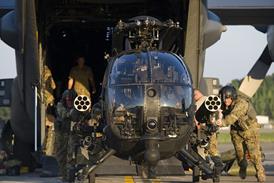Investigators have found that a ruptured fuel manifold hose on the Rolls-Royce Trent XWB-97 engine of a Cathay Pacific Airbus A350-1000 led to an in-flight engine fire that could have caused “extensive damage” if not addressed promptly.
Releasing their preliminary investigation report into the 2 September incident, Hong Kong’s Air Accident Investigation Authority (AAIA) found that the Trent XWB engine’s secondary fuel manifold hose had ruptured, causing a leak that led to the fire.

Operating as flight CX383 from Hong Kong to Zurich with 332 passengers and 16 crew aboard, the fire was detected in the number 2 engine shortly after take-off as the aircraft was at around 34ft and travelling at 191kt (353km/h).
The crew immediately shut down the engine and deployed a fire extinguisher, clearing the alarm after 59s. Having circled to dump fuel, the A350 (B-LXI) returned to Hong Kong 1h 15min after take-off.
AAIA investigators found a “discernible hole” in the steel-braided hose and observed black soot in the aft section of the engine, as well as burn marks on the underside of the engine’s two thrust reverser cowls, confirming the presence of a fire.
Post-incident examination of the engine revealed that another five secondary hoses were “found to have either frayed metal braids or collapsed structures inside the hose”.
“Further inspection suggested that fuel directed to the fuel spray nozzle could leak through the ruptured secondary fuel manifold hose,” the AAIA adds.
“If not promptly detected and addressed, this situation, along with further failures, could escalate into a more serious engine fire, potentially causing extensive damage to the aircraft,” it states.
The incident prompted the European Union Aviation Safety Agency (EASA) to order a one-time inspection of the fuel manifold hoses for A350-1000 operators. Rolls-Royce on 5 September issued a service bulletin addressing the issue. .
EASA’s directive, which covers all Trent XWB-97s, except for 34 specifically identified examples, requires older engines – those with 18,500h or 2,300 cycles, and which have undergone at least two shop visits – to be inspected.
As investigations carry on, the AAIA says it will continue to analyse the factors leading to the fire – including probing the “fire dynamics” and how it spread – and examine what caused the hose to rupture.
Inspections conducted by Cathay in the wake of the incident found 15 other A350s in its fleet with similar parts that were damaged and in need of replacement.





























